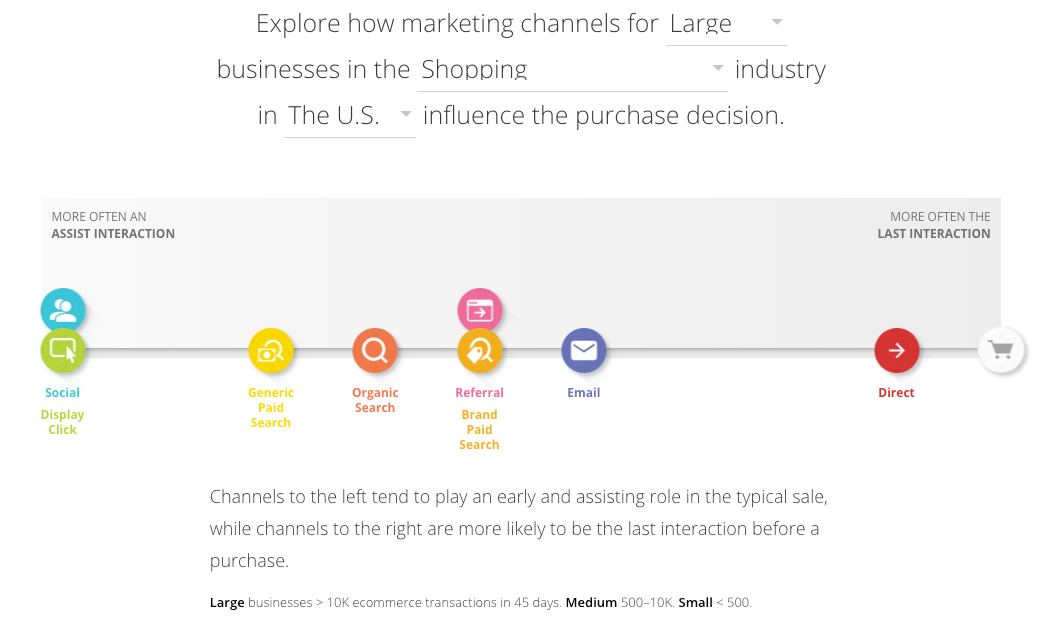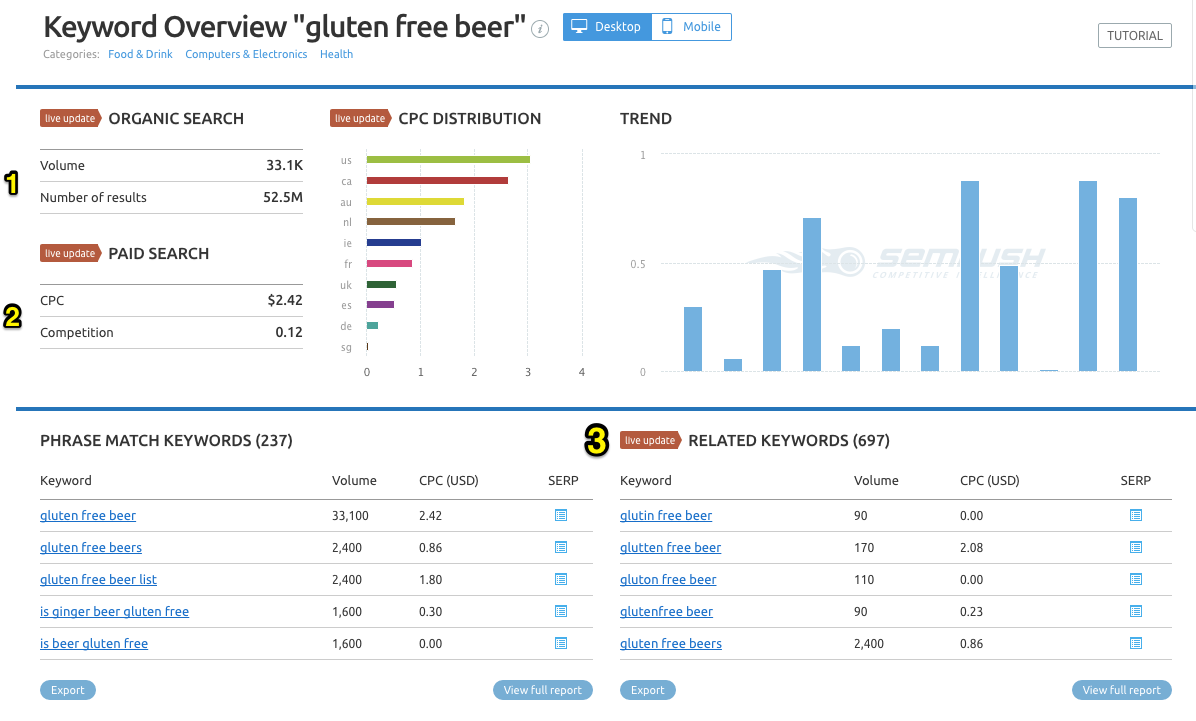1. Funnel Stage
Keyword research should start with a page or a group of them. On the left side of a spreadsheet, you drop in the URL. And on the right, you’ll input the keyphrase for each.
You tick off the usual boxes like volume and competition. But you’re forgetting about something: context.
Want more visitors? Easy. Talk about celebrity gossip. The problem is that none of it will stick around. Unless you’re paid per page view, it’s fruitless.
Instead, that “volume” number needs some context. Some long-tail variations. Some stuff in the middle and bottom of the funnel that will bring in people who are already primed to convert.
Take Las Vegas. Talking about the city (generally) would net you tons of visits. Discussing the finer points of “Vegas Odds” would bring you a particular type of segmented audience — people who might visit and check things out, but not yet buy. Discussing “Vegas Hotels” would finally bring in a small subset who has their credit cards in hand.

Then you use content mapping to align these funnel topics to existing (or new) pages.
- Awareness: The 10 Shortest Las Vegas Celebrity Marriages
- Consideration: Vegas Odds for Blackjack eBook: 10 Insider Secrets to Beat the House
- Decision: Vegas Hotels Pricing Page
That’s a good start. But unfortunately, not all businesses are similar. This means search intent might shift up or down the funnel depending on the industry.
Google’s own Customer Journey to Online Purchase can help you figure this out. Select your size, industry, and location then it will show you which channels are emphasized at different points within the buyer’s journey.
For example, organic search plays a huge role when people are evaluating products (comparing alternatives in the middle of the funnel). Related:GroupBuy SEO Tools

So now you know where to allocate the most resources.
2. PPC Performance
Every company thinks they’re short on money. But what most marketers are truly short on is time.
You simply don’t have enough hours in the day to grok around in the dark. You can’t guess which keyphrases are going to work.
So, you pay Google to find out.
Start with the product or service name. You know, the super commercial one that nobody searches for. Then look up related keywords to balance relevance; something pretty close but hopefully a little more popular.Related:GroupBuy SEO Tools

Then load those suckers into AdWords and let ’em ride.
Marketing, after all, is no science. It’s a guessing game. You have no idea what’s gonna work until you try it out, test it, and iterate it.
3. Existing Page Topics
Category pages on your WordPress blog are supposed to bring together closely related topics. And they do a decent job of it for readers.
But not search engines. Cue duplicate content and canonicalization issues.
There isn’t a lot of context around closely related posts, either. So category pages often become a mess with hundreds of posts. It’s a UX nightmare in the making.
However, categories will do some of the work for you. For example, you’ve got tons of visually appealing, in-depth posts about cocktails. Like this one on Whiskey Sours (yes please!).
Perfect. Now you’ve got some low-hanging fruit with potential hub pages staring you in the face.
First thing that comes to mind is the whiskey. I mean, the type of alcohol in each cocktail.
It might take you half a day to compile these posts in a few hub pages, breaking out drinks for people based on their liquor preference.
So you do the usual. You start researching “whiskey cocktails” to find the right angle (and volume and competition).
And that’s when something jumps out at you…

Three of those relevant keyphrases have something in common: season.
Two “summers” and one “fall.” I couldn’t have created a better segue if I tried.
4. Seasonality
Seasonality usually relates to when your business is booming. That short window of time each year (or several times each year) when things pick up and get interesting.
Take flat screen TVs, the headliner at most Black Friday sales. So guess when search demand peaks?

But as we just saw, seasonality can affect keyphrase choice in top and middle of the funnel, too.
A hub page targeting “whiskey cocktails” might be tough. You’re most likely going up against the biggest brands in the industry like Bon Appetit, AllRecpies.com, or even BuzzFeed.
That’s where the long-tail variations come in. Specifically, whiskey drinks for summer (crisp and refreshing) and those in the fall (warm and full-bodied).
Think about seasonality in terms of affinity or what your customers are into. Here’s an extreme example.
If customers are music lovers (and/or your product/service is best accompanied with some musical backdrop), you can capitalize on the ~four weeks a year people actually care about the Grammy Awards.
No comments:
Post a Comment